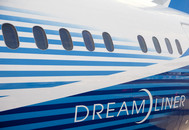Aviation Nigeria
U.S. regulators said they will perform a far-reaching investigation of Boeing Co. (BA)’s 787 Dreamliner after a fire on a Japan Airlines Co. (9201) jet this week followed several incidents last year.
The U.S. Federal Aviation Administration will undertake a comprehensive review of the 787’s critical systems, “including the design, manufacture and assembly,” the Department of Transportation said in a statement. Transportation Secretary Ray LaHood, FAA Administrator Michael Huerta and Boeing Commercial Airplanes President Ray Conner will address the issues in a press conference at 9:30 a.m. eastern time, it said.
The review is in addition to a U.S. National Transportation Safety Board probe of the Jan. 7 fire that the agency said caused severe damage to the battery pack area of the 787 after passengers disembarked in Boston following a flight from Tokyo. A couple of jets were grounded last month by a power fault which Boeing said this week it had traced to flaws in power panels.
“We actively work with the FAA daily, across all of our product lines,” Marc Birtel, a Boeing spokesman in Seattle, said in an e-mailed statement prior to the formal announcement of the inquiry. “We are absolutely confident in the reliability and performance of the 787.”
Electric Reliance
The Dreamliner conserves fuel by using five times more electricity than other similar jets and by saving weight with a fuselage and wings made from composite materials, not aluminum. Some existing FAA regulations didn’t cover the new technologies, so the plane was certified with multiple “special conditions.”
An agency review stops short of emergency actions such as mandatory fixes or a fleet grounding that the Washington-based FAA has imposed after some aviation accidents. The NTSB classified the fire in Boston as an “incident,” not an accident.
“We are working with the FAA and our customers to ensure we thoroughly understand any introductory issues that arise,” Birtel said. “While we take each issue seriously, nothing we’ve seen in service causes us to doubt the capabilities of the airplane.”
Boeing fell 0.4 percent to $76.75 at 7:06 p.m. in New York after regular trading yesterday. The shares had previously dropped 2 percent to $76.13 since Jan. 4, the last trading day before the Boston fire.
New Routes
The 787 has been marketed by Chicago-based Boeing as a way to open new routes between far-flung cities, such as Tokyo and New York, that don’t need the capacity of wide-bodies such as the 777 and the 747.
The FAA has granted the plane permission to fly up to 180 minutes away from landing strips, and Boeing said this week it’s in final talks to extend that to 330 minutes, which increases the importance of reliability.
The 787’s use of lithium-ion batteries sets it apart from other models. Boeing got regulators’ permission to use the batteries in the jet in 2007, three years after passenger planes were barred from carrying non-rechargeable types as cargo.
Only those batteries can provide a high-energy start and be recharged quickly to meet the jet’s needs, Mike Sinnett, the chief engineer for the Dreamliner, said this week. The battery has “robust protection” against charging and discharging too quickly, since both are dangerous, he said.
All new jets have introductory pains the first year or two, Sinnett said. The 787’s performance since entering service in 2011 hasn’t been any worse than that of the 777, which made its commercial debut in 1995 and is one of Boeing’s most popular models, and has been better than other wide-body jets, he said.
Oil Leak
All Nippon Airways Co. (9202), first to start commercial operations with the Dreamliner, is replacing a cockpit window on a 787 that cracked during a flight between Tokyo and Matsuyama in western Japan, spokeswoman Megumi Tezuka said today. An oil leak was found when another 787 landed at Miyazaki in southern Japan, she said. The plane returned to Tokyo after inspections.
The airline, the biggest operator of the Dreamliner, had two previous cases of window cracks on the jet, Tezuka said.
India’s government, owner of Air India Ltd., is concerned about the problems reported elsewhere, an aviation ministry official said today, asking not to be identified citing government rules. The nation’s aviation regulator is awaiting the U.S. reports on the aircraft.
Air India received its sixth Dreamliner on Jan. 7.






0 comments:
Post a Comment